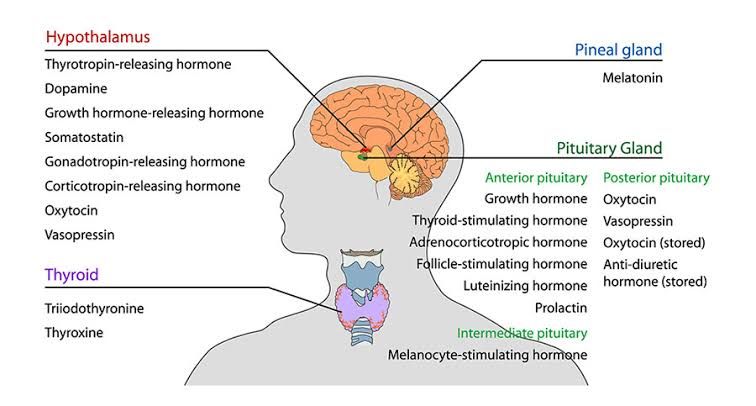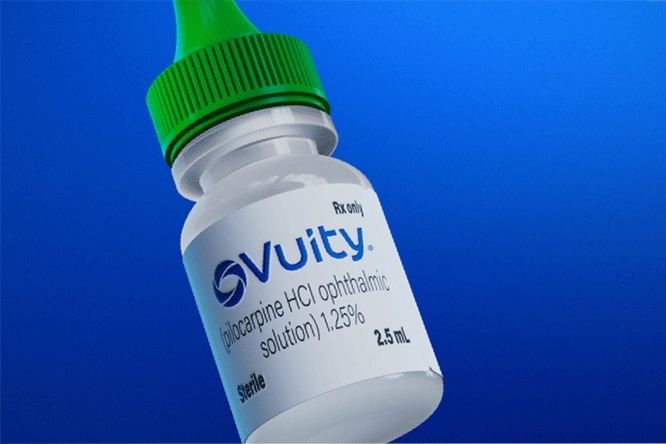
Synthetic Analogs of Hypothalamic Hormones
Hypothalamic hormones play a crucial role in regulating various physiological processes, including growth, metabolism, and reproduction. Synthetic analogs of these hormones have been developed to enhance therapeutic efficacy and reduce side effects. Below is a detailed overview of some key synthetic analogs, their mechanisms of action, clinical uses, routes of administration, and potential side effects.
1. Gonadotropin-Releasing Hormone (GnRH) Analogues
Mechanism of Action:
GnRH analogs, such as leuprolide and goserelin, act by binding to GnRH receptors in the pituitary gland. They initially stimulate the release of luteinizing hormone (LH) and follicle-stimulating hormone (FSH), but with continuous administration, they lead to downregulation of these receptors and ultimately decrease gonadal steroid production.
Clinical Uses:
- Treatment of hormone-sensitive cancers (e.g., prostate cancer).
- Management of endometriosis.
- Control of precocious puberty.
- Assisted reproductive technology protocols.
Routes of Administration:
GnRH analogs can be administered via subcutaneous injection or intramuscular injection. Some formulations are available as implants for prolonged release.
Side Effects:
Common side effects include hot flashes, mood changes, decreased libido, fatigue, and potential bone density loss due to reduced estrogen/testosterone levels.
2. Somatostatin Analogues
Mechanism of Action:
Somatostatin analogs like octreotide and lanreotide mimic the action of natural somatostatin by binding to somatostatin receptors on target cells. This leads to inhibition of growth hormone (GH) secretion from the pituitary gland and reduces insulin and glucagon secretion from the pancreas.
Clinical Uses:
- Treatment of acromegaly.
- Management of neuroendocrine tumors.
- Control symptoms associated with carcinoid syndrome.
- Treatment for variceal bleeding in portal hypertension.
Routes of Administration:
These analogs are typically administered via subcutaneous or intramuscular injections; long-acting formulations are also available for less frequent dosing.
Side Effects:
Potential side effects include gastrointestinal disturbances (nausea, diarrhea), gallbladder issues (gallstones), hyperglycemia or hypoglycemia depending on individual responses, and injection site reactions.
3. Corticotropin-Releasing Hormone (CRH) Analogues
Mechanism of Action:
CRH analogs such as crh are designed to stimulate the release of adrenocorticotropic hormone (ACTH) from the anterior pituitary gland. This results in increased cortisol production from the adrenal glands.
Clinical Uses:
- Diagnostic testing for adrenal insufficiency.
- Potential treatment for depression or anxiety disorders under investigation.
Routes of Administration:
Typically administered intravenously for diagnostic purposes; research into other delivery methods is ongoing.
Side Effects:
Possible side effects include transient increases in blood pressure, anxiety-like symptoms during administration due to increased cortisol levels, headache, and flushing.
4. Thyrotropin-Releasing Hormone (TRH) Analogues
Mechanism of Action:
TRH analogs stimulate the release of thyroid-stimulating hormone (TSH) from the anterior pituitary gland which subsequently stimulates thyroid hormone production from the thyroid gland.
Clinical Uses:
Primarily used in diagnostic testing for hypothyroidism; research into therapeutic applications is ongoing but not widely established yet.
Routes of Administration:
Administered intravenously during diagnostic procedures; no established therapeutic formulations currently exist outside this context.
Side Effects:
Generally well-tolerated; however, possible side effects may include transient nausea or headache following administration during tests.
In summary, synthetic analogs of hypothalamic hormones serve critical roles in both therapeutic interventions and diagnostic evaluations across various medical fields. Their mechanisms primarily involve receptor interaction leading to modulation in hormonal secretion patterns. While effective in treating specific conditions, these agents also carry potential side effects that must be managed carefully by healthcare providers.







